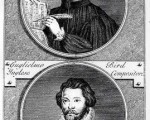
On this day in 1623, Wiliam Byrd, the famous Elizabethan English composer, died at Stondon Massey in Essex and he was buried next to his wife in the parish church there.
[Read More...]
On this day in 1623, Wiliam Byrd, the famous Elizabethan English composer, died at Stondon Massey in Essex and he was buried next to his wife in the parish church there.
[Read More...]
On 3rd July 1495, the pretender Perkin Warbeck landed at Deal in Kent with men and ships. Around 150 of his men were killed and over 160 captured by Henry VII’s troops. Warbeck escaped, fleeing to Ireland. Warbeck claimed to be Richard, Duke of York, the younger of the Princes in the Tower.
[Read More...]
In this week’s Claire Chats I talk about how to go about researching Tudor history. I’m sharing a slideshow and talk I did back in 2013 and I do hope it’s useful to those of you who are new to researching history.
[Read More...]
London is sweltering in unaccustomed heat, so if you are in England you might consider a visit to the Queen’s gallery, Buckingham Palace just to get out of the sun.
The exhibition is full of beautiful paintings, china and exquisite Fabergé flowers and importantly for members of The Tudor Society, this painting by the prolific artist, British School.
[Read More...]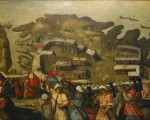
The waters of the bay were littered with floating wooden crosses. To each was nailed the decapitated corpse of a warrior who had died trying to defend the island. This was the gruesome sight which presented itself to Malta’s citizens in the last days of June 1565. After a month-long siege the fortress of St. Elmo had been obliterated by Muslim artillery and its 1,500 surviving inhabitants had been butchered. The incident has a horribly familiar ring to it. We recognise the fanatical nihilism of terrorists who justify their own most inhuman impulses by reference to the creation of a worldwide Islamic state from which everything not in accord with Sharia law would have been purged.
[Read More...]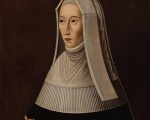
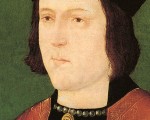
On Sunday 28th June 1461, Edward IV was crowned king at Westminster Abbey. Edward had been declared king after defeating the Lancastrian forces at the Battle of Towton in March 1461. Edward had made his triumphal state entry into London on Friday 26th June, riding from Lambeth to the Tower of London.
[Read More...]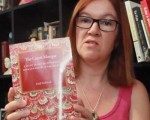
Last week, I explained that the court masque that was part of the entertainments of Epiphany 1512 was a new type of entertainment and that it was the result of the merging of old English traditions with the new Italian fashion. In this week’s video, I talk about this Italian fashion and how it came about.
[Read More...]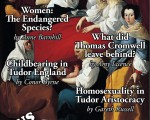
This month we have a wide range of articles under the broad theme “Vulnerability”. Tudor Life magazine is packed with articles by well known historians.
[Read More...]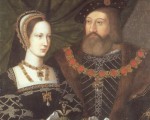
Mary Tudor, Queen of France, and Charles Brandon, Duke of Suffolk.[/caption]Mary Tudor, Queen of France, was the younger sister of King Henry VIII. Born to King Henry VII and Queen Elizabeth of York in 1496, Mary was one of eight children and one of only three to survive to adulthood. Tragedy struck Mary at just seven years of age when her older brother and heir to the throne, Arthur, died in 1502. Less than a year later, Mary’s mother Elizabeth of York died trying to give Henry VII another son. Then, when Mary was eight years old, her older sister Margaret, then fourteen, left England for Scotland to marry King James IV. Mary and her older brother Henry were the only two siblings left in England and it has been suggested that during this time, growing up together, they formed a close bond which survived until Mary’s death.
[Read More...]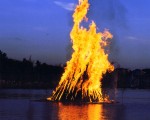
The Feast of St John the Baptist was one of the most important feast days of the medieval and Tudor calendar and coincided with Midsummer, the pagan celebration of the summer solstice.
[Read More...]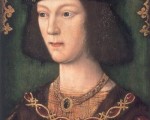
On Saturday 23rd June, Henry VIII and his wife Catherine of Aragon left the Tower of London and made their way through the streets of London to Westminster on their coronation procession.
[Read More...]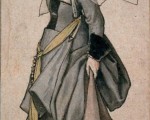
Kyra, Claire, Tim and I are making a final call for submissions to our essay collection “Envisioning the Tudor Woman”. The deadline for entries is 30 June and we’ll be putting together our shortlist soon after, so there’s still time.
[Read More...]
Here’s the transcript from the excellent live-chat session with Gareth Russell on Friday evening. Thanks all those who turned up and congratulations to Bill for winning a copy of “A History of the English Monarchy” by Gareth.
[Read More...]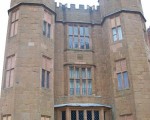
How much do you know about the residences of Plantagenet and Tudor families? Test your knowledge with this fun quiz.
[Read More...]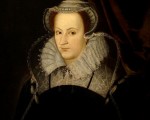
On 20th June 1567, a few days after Scottish rebels apprehended Mary, Queen of Scots, servants of James Douglas, 4th Earl of Morton, allegedly found a silver casket of eight letters, two marriage contracts (which apparently proved that Mary had agreed to marry Bothwell before his divorce) and twelve sonnets. The casket was found in the possession of James Hepburn, 4th Earl of Bothwell and third husband of Mary, Queen of Scots.
[Read More...]
In today’s Claire Chats video I talk about the English court masque and how it developed from a merging of old English traditions and a new Italian fashion.
[Read More...]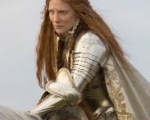
Lacey Baldwin Smith has written that “Tudor portraits bear about as much resemblance to their subjects as elephants to prunes.” A slight exaggeration, maybe. But it is true that the historical accuracy of the depictions in Tudor portraits, particularly of royalty, was often at war with “symbolic iconizing”—the use of imagery to represent the person’s character, position or role.
The symbolism could include inscriptions, emblems, mottos, relationships with other people, animals, or objects, and it could also be written into the body itself. A famous example is Hans Holbein’s sketch of Henry VIII—the painting itself was destroyed in a fire—with the king posed to emphasize his power, authority, and resoluteness: legs spread and firmly planted, broad shoulders, one hand on his dagger, and a very visible codpiece (larger, art historians have noted, than portraits of other men at the time.) His stance, as Suzanne Lipscomb points out, “mimics the stance of a man standing in full armour…sparking associations with martial glory.” Lipscomb also points out an interesting detail: in the draft sketch, Henry’s face is turned to a ¾ angle. But in the final painting, as we know from 16th century copies done within Henry’s lifetime, Holbein has Henry looking straight ahead, confronting the spectator with an unblinking stare that is still symbolic of masculinity today.
[Read More...]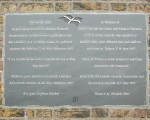
The Battle of Blackheath, also known as the Battle of Deptford Bridge, was the battle which brought the Cornish Rebellion to an end. It was fought on 17th June 1497 and Henry VII’s forces were triumphant against the rebels.
[Read More...]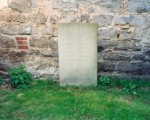
The Battle of Stoke field, which was fought on 16th June 1487, is known as the last battle between the Houses of York and Lancaster in the civil war we call the Wars of the Roses.
[Read More...]
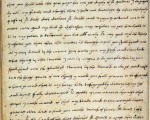
I just wanted to share with you some resources from the National Archives for those of you using primary sources for your research. Reading and interpreting old documents can be a challenge in many different ways, so here are some resources you should find useful.
[Read More...]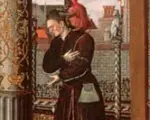
William Somer (Sommers) served as Henry VIII’s fool from June 1535 and just a month later got into trouble with the King. In July 1535, Eustace Chapuys, the Imperial ambassador, recorded that Henry VIII was so angry with Somer that he nearly killed him:
[Read More...]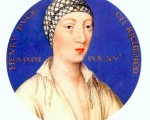
Henry Fitzroy was the illegitimate child of Henry VIII, the second Tudor monarch, with his mistress Elizabeth Blount. In 1512, when Henry VIII was approximately twenty-one years of age a beautiful young woman came to court. Her name was Elizabeth “Bessie” Blount and at that time she had no idea the future that lay ahead of her. While the Blounts were not members of nobility, they were members of the gentry who through opportunity, connections and talent had earned a place at court. It is believed that it was William Blount, Lord Mountjoy, Queen Katherine of Aragon’s chamberlain, who acquired a place at court for Elizabeth Blount. Sometime between 1513 – 1514, Bessie became a maid of honour to the Queen. As a maid of honour, Bessie would have had to have been beautiful and well-mannered, with all the accomplishments suitable for a young lady of the time. She’d need to be able to play a musical instrument, to sing and dance, to sew and embroider, to know her place and, most importantly, be devout to the Catholic faith. It is reported that Bessie was a very talented singer and dancer, and it may have been these talents which attracted the young Henry VIII.
[Read More...]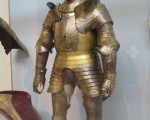
Test your knowledge of the weapons and armour used in the medieval and Tudor periods with this fun quiz – Good luck!
[Read More...]